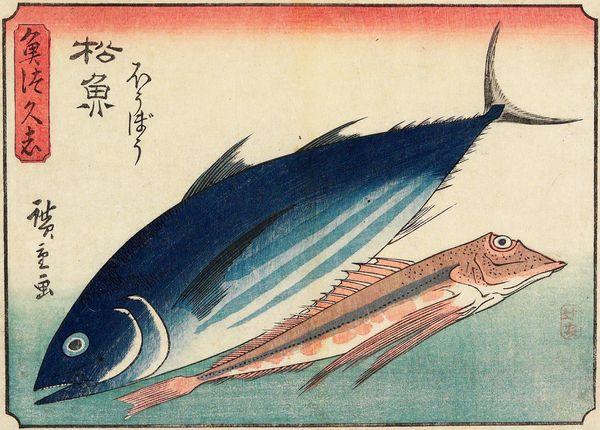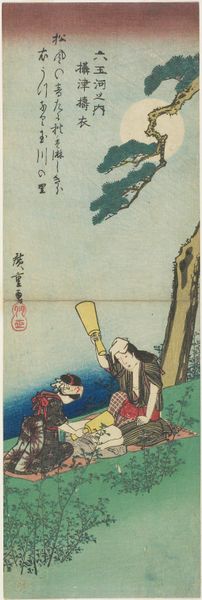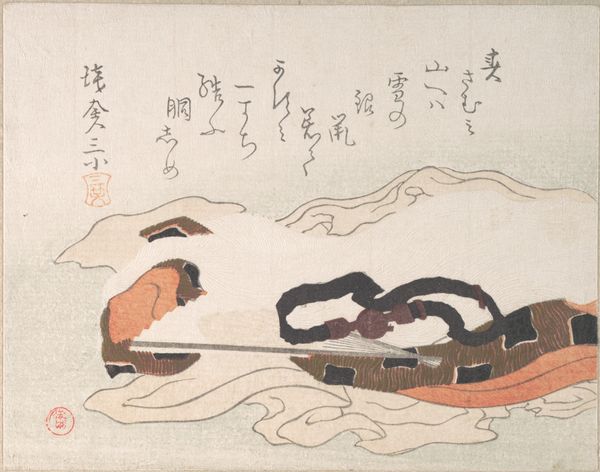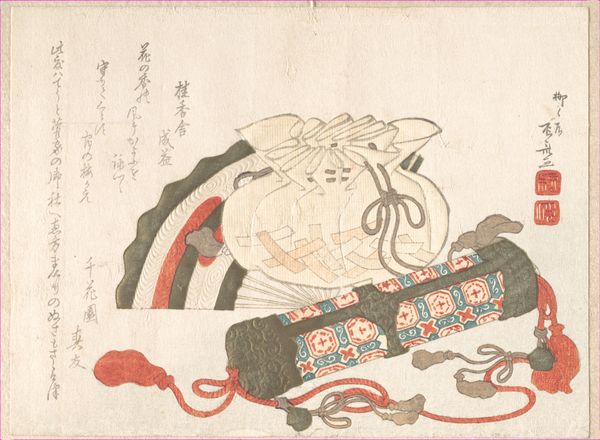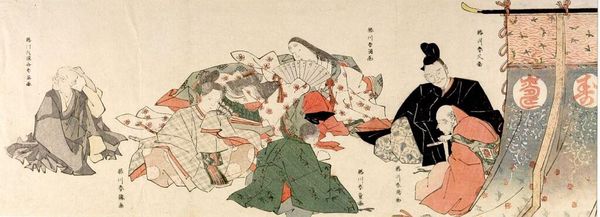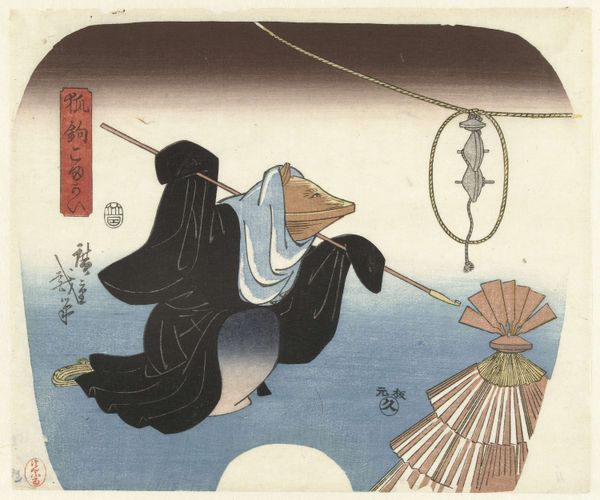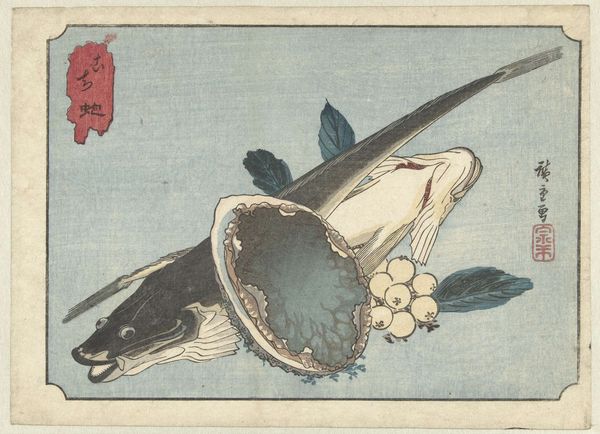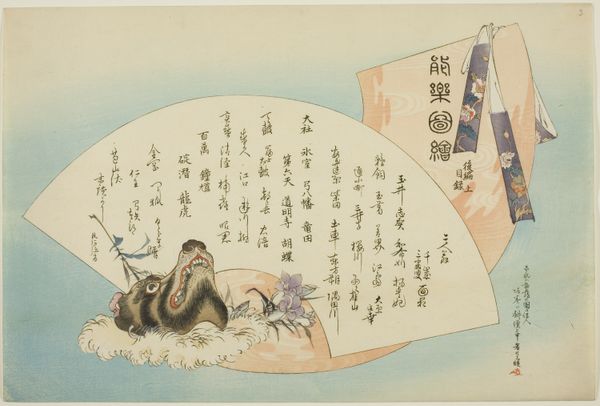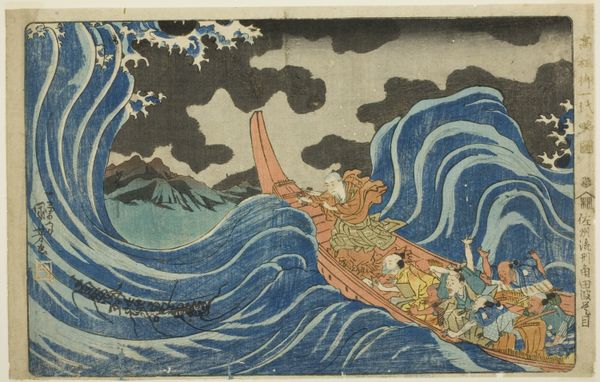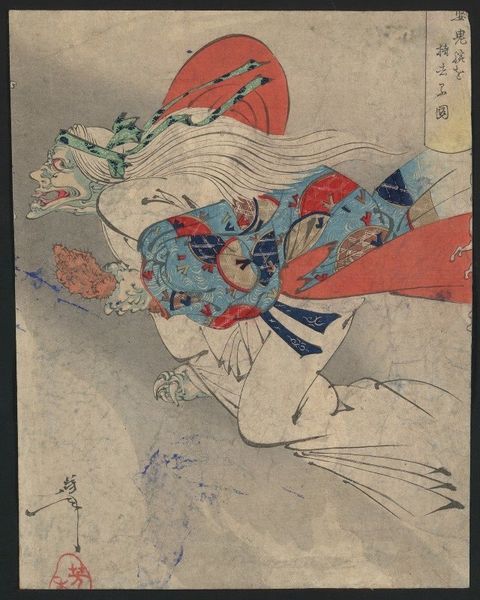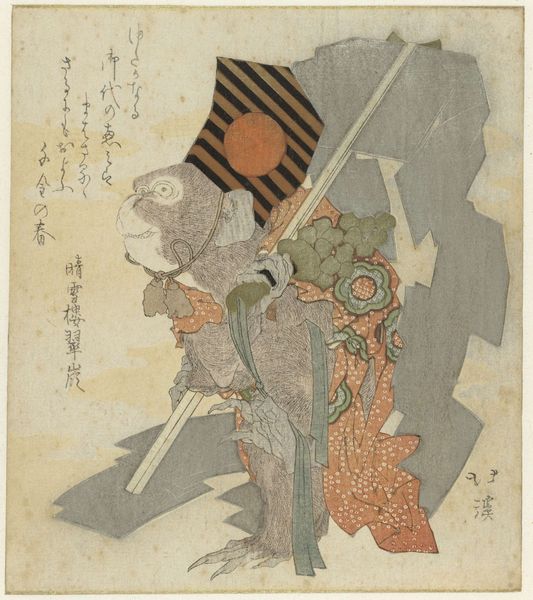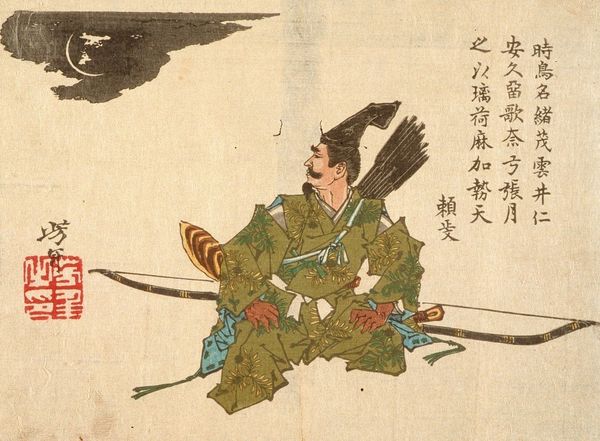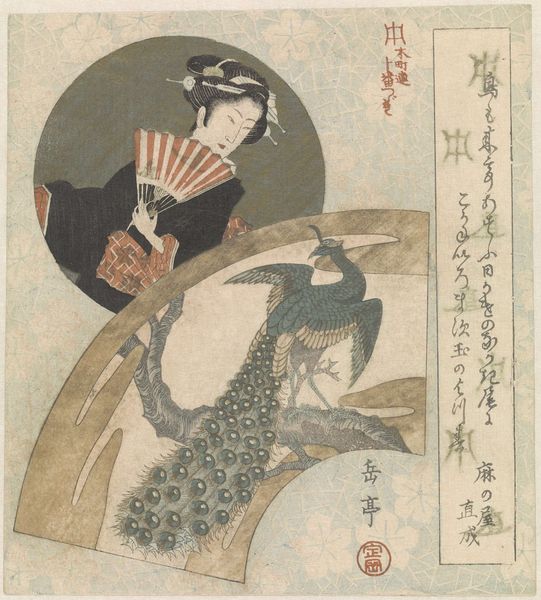
print, ink, woodblock-print
#
water colours
# print
#
asian-art
#
ukiyo-e
#
japan
#
ink
#
woodblock-print
#
watercolor
Dimensions: 5 7/8 × 8 3/16 in. (15 × 20.8 cm) (image, horizontal chūban)
Copyright: Public Domain
Editor: This print, “Abalone and Flathead” by Utagawa Hiroshige, circa 1835 to 1839, utilizes ink and water colours in a woodblock print. The image feels both whimsical and incredibly precise. I'm especially drawn to the almost playful expression on the fish. How do you interpret this work? Curator: It’s interesting you pick up on the 'playful' quality. Hiroshige's *ukiyo-e*, or "pictures of the floating world", emerged during a period of relative peace and prosperity in Japan. This genre wasn't just about aesthetics; it reflected a burgeoning middle class with new leisure activities and consumer interests. The fish and abalone, while seemingly simple subjects, connect directly to this cultural shift – food, consumption, the everyday elevated to art. Considering this historical context, does that change how you view the piece? Editor: It does! Thinking about it as reflecting everyday life for a growing middle class gives it a whole new layer. So, the image is less about the specific fish and more about the social dynamics of the time? Curator: Precisely. Ukiyo-e prints were often commissioned and circulated widely, serving as a form of social commentary and, frankly, advertising. These images influenced consumer culture. Editor: That’s a helpful perspective. So appreciating this artwork can allow a glimpse into the social landscape of 19th-century Japan. I hadn't thought about art being used as a tool for marketing way back then. Curator: It underlines how art isn't made in a vacuum, does it not? Its reception and purpose evolve according to prevailing social and cultural undercurrents. Editor: Absolutely. I'll certainly view these works in museums differently now.
Comments
No comments
Be the first to comment and join the conversation on the ultimate creative platform.
